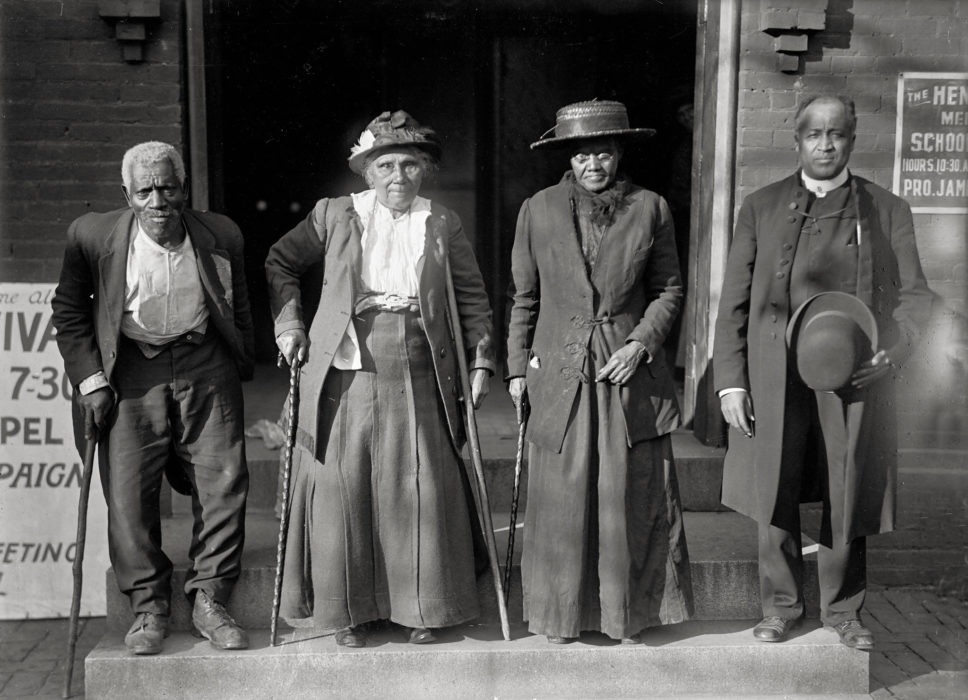“I NEVER QUITE RECOVERED from the shock and pain of my first bitter realization that to be a colored woman is to be discredited, mistrusted and often meanly hated,” she said, writing of her first experience in America’s South.
She, Fannie Barrier Williams, was an African American teacher, journalist, and social activist, one of the key founders of the Frederick Douglass Center, a settlement house that served Chicago’s African American population. On Saturday, November 2, 1912, ‘Abdu’l-Bahá spoke at the center, located about five blocks west of Lake Michigan at 2032 South Wabash Street.
By growing up in the North, Fannie Williams was sheltered from the worst of the anti-black oppression that took place elsewhere in the country: her family was generally accepted by the surrounding society of middle-class whites. But after the Civil War, and inspired by Frederick Douglass, a family friend who had escaped slavery and become the nation’s foremost abolitionist, she decided to accept a teaching position in the south among newly freed slaves. Appalled by the oppression she faced, Fannie soon left.
Fannie Williams sought to extend to her fellow African Americans the type of education that had opened the way for her own achievements. She founded the settlement house in Chicago, where she had been living with her husband, in 1905.

The Frederick Douglass Center was not the only settlement house that ‘Abdu’l-Bahá spoke at in the United States. On April 30, 1912, he spoke to the National Association for the Advancement of Colored People at Hull House, a settlement house founded by Jane Addams. In Washington, DC, he visited to a settlement house set in motion by Alice Barney, a prominent artist.
‘Abdu’l-Bahá’s words at the Frederick Douglass Center were not recorded. Mahmúd-i-Zarqání wrote that ‘Abdu’l-Bahá “gave an impressive talk at a gathering of blacks. Many white people were also present. He spoke on love and brotherhood among the different races and nationalities.” “If a believer in God prays for piety,” ‘Abdu’l-Bahá said, “it does not matter whether he is robed in black or white.’”
Settlement houses were usually located in poor urban areas, so that middle-class men and women could live among the people they aimed to serve. Most houses set out to uplift immigrants by teaching them “proper” ways of life — everything from dancing and painting to housekeeping and civic reform — as well as middle-class values.
Not everyone agreed with the approach of the Frederick Douglass Center. The Broad Ax, a black newspaper, claimed that not one of the men or women connected with the center could explain “what it stands for; or what method it is pursuing or it contemplates in pursuing in order to be of the slightest practical benefit to the great mass of the Afro-Americans residing in the city.”
But historian Harry P. Kraus, writing decades later in 1942, could cast his evaluative eye back to the settlement movement and conclude that, “It was the settlement house, more than any other single institution of the time, which sought to ‘counteract the dogma of individualism and restore the social principle to thought about civilization.’” Settlement workers were meticulous at keeping records of the conditions of their neighborhoods, which drove the new discipline of social work.
“Idealistic and pragmatic,” Kraus wrote, “the settlement workers sought to know and act. They were the first to recognize the responsibilities of all citizens for the inequalities within the industrial, urban ghetto and they were the first to voluntarily take up residence in the ghetto.” Another commentator wrote that the settlement movement aimed “to remind us we were neighbors.”
And for Fannie Barrier Williams’s black neighborhoods in Chicago, the neighbors were soon to come knocking. Beginning about 1915, and for the next six decades, the Great Migration would swell the black neighborhoods of Chicago, Detroit, New York, Philadelphia, Los Angeles, and dozens of other northern cities. Fifteen million African Americans, escaping the Jim Crow caste system and the virtual slavery of sharecropping, would change America as they picked up themselves and their families and set out for a new life in the new world of the North.






